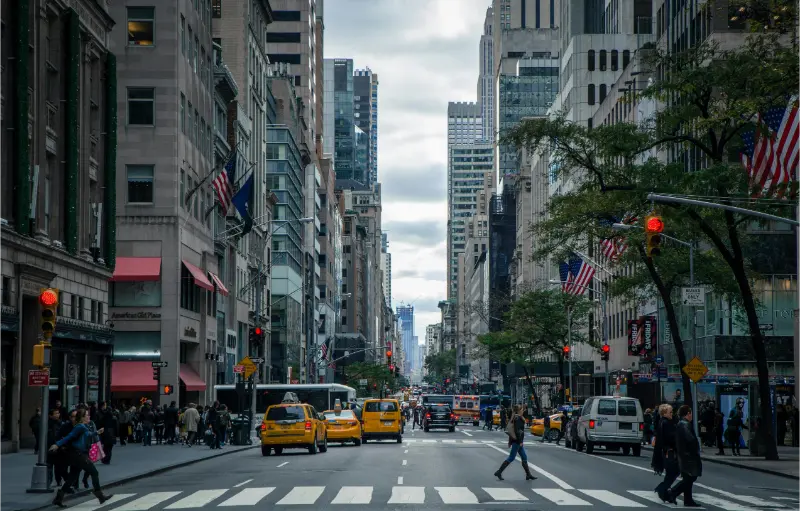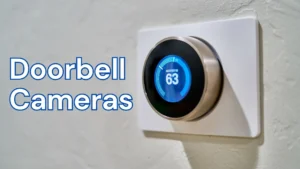
Urban cooling techniques are crucial for addressing the escalating temperatures in cities due to the urban heat island (UHI) effect. As urban areas grow, buildings, roads, and other structures absorb and retain heat, significantly raising temperatures compared to rural surroundings. This phenomenon exacerbates the challenges posed by global warming, making urban environments increasingly uncomfortable and unhealthy. By understanding and implementing effective cooling strategies, cities can mitigate these effects, improving the quality of life for their residents and promoting sustainable urban development. But first thing first! Let’s find out what is urban heat islands.
Table of Contents
Understanding Urban Heat Islands
Urban heat islands (UHIs) are areas in cities where temperatures are significantly higher than in surrounding rural areas. This happens because cities have lots of buildings, roads, and other structures that absorb and trap heat. This is the primary cause of temperature increase in most of the dense cities on Earth. For example, in big U.S. cities like New York and Chicago, millions of people live in neighborhoods where it can be more than 10°F hotter on average compared to nearby countryside, according to data from Statista. This heat gets trapped and builds up, especially in areas with fewer parks and trees that normally cool things down through evaporation.
Global warming makes urban heat islands worse by raising overall temperatures too. As the climate warms, cities get even hotter, intensifying the UHI effect. Research shows that this trend is accelerating, affecting cities worldwide and making it urgent to find ways to cool down urban areas. This double impact shows why tackling both local and global factors causing urban heat islands is crucial.
The intensity of UHIs varies depending on where cities are located. Factors like latitude, elevation, and how close cities are to water can all affect how hot cities get compared to their surroundings. For instance, cities in warmer climates or those surrounded by mountains may experience more extreme heat islands. In places like Miami, New Orleans, and Houston, known for their warm weather and sprawling development, heat islands can be especially severe. According to Statista, about 1.5% of Miami’s population lives in areas where temperatures are more than 12°F higher than nearby non-urban areas, showing just how intense these heat islands can be in some places.
Now let’s break down all the points and dive into more depth to find out the core issues that create urban heat islands.
Causes of Increased Temperatures in Urban Areas
Urban areas face escalating heat challenges due to solar absorption, thermal radiation from paved surfaces, and emissions from vehicles and industries. These factors contribute to the urban heat island effect, exacerbating temperatures and impacting urban environments.
Solar Absorption
Solar radiation is the energy that comes from the sun and reaches the Earth’s surface. Urban areas are often hotter than rural regions because materials like bitumen and cement absorb and hold more of this solar energy than vegetation does. This is known as the urban heat island effect as we discussed before. City construction materials, such as dark-colored roofs and pavements, are especially good at soaking up solar radiation. Once these materials absorb the sun’s energy, they heat up, which causes the temperature in urban areas to rise.
Thermal Radiation
Thermal radiation, on the other hand, is the energy emitted by objects as a result of their temperature. In urban areas, paved surfaces not only absorb a lot of solar radiation during the day but also emit this energy as thermal radiation once the sun sets. This emission of heat continues into the night, leading to higher nighttime temperatures. This process contributes significantly to the urban heat island effect.
Heat Absorbing Infrastructure and Paved Surfaces
Urban areas are filled with infrastructure such as bridges, tunnels, elevated roads, and extensive paved surfaces like roads, parking lots, and sidewalks. These structures and surfaces are typically made of materials like concrete and asphalt that absorb and retain a significant amount of heat. Unlike natural landscapes that cool down quickly, these man-made structures hold onto heat and release it slowly, especially at night. This prolonged heat retention raises local temperatures and contributes to the overall rise in urban temperatures.
Increased Vehicle Emissions
Cities are often bustling with vehicles, from cars to buses to trucks. These vehicles emit not only pollutants but also heat, especially during peak traffic hours. This combination of exhaust fumes and heat contributes significantly to the overall temperature in urban areas. With more vehicles on the road, especially in densely populated cities, the cumulative effect of all these emissions can raise urban temperatures considerably.
Air Conditioning Units and Waste Heat from Electronic Devices
Air conditioning units and electronic devices are significant contributors to urban heat. Air conditioning units, while providing relief indoors, expel hot air outside, creating hot spots around buildings and raising outdoor temperatures. This contributes to the broader UHI effect. On a sweltering day, New York City’s electricity demand can exceed 13,000MW due to the simultaneous use of millions of air conditioning units, as noted by The Guardian. The high energy demand during heatwaves often pushes the city’s power grid to its limits, causing blackouts and other infrastructure challenges.
Similarly, modern cities are packed with electronic devices and appliances, such as computers, televisions, and servers, in homes, offices, and commercial establishments. These devices generate a considerable amount of heat as they operate. For instance, a small air conditioning unit cooling a single room consumes more power than four refrigerators, while a central unit for a house uses more power than 15 refrigerators. The International Energy Agency (IEA) highlights that as the global number of air conditioning units is projected to increase from 1 billion to over 4.5 billion by 2050, the energy they consume and the heat they release will worsen urban heat issues. In places like New York City, the use of air conditioning and electronic devices is already causing the city to frequently push its power grid to maximum capacity, further contributing to the urban heat island effect.
Industrial Activities
Industrial activities in cities, such as manufacturing, processing, and other factory operations, emit large amounts of heat and pollutants. The processes often involve high-temperature operations that release significant heat into the surrounding environment.
Pollution and Greenhouse Gases
Air pollution and greenhouse gas emissions from urban activities, as documented by The Emissions Database for Global Atmospheric Research (EDGAR), significantly contribute to trapping heat in the atmosphere. These pollutants form a layer that inhibits the escape of heat, mirroring the global greenhouse effect. In particular, CO2 emissions from fossil fuel combustion constitute the largest portion of global GHG emissions (71.6%), with methane (CH4) and other gases contributing significantly as well. As a result, the gathering of heat worsens the urban heat island effect. This emphasizes the importance of controlling emissions and working together globally to tackle these issues and create sustainable urban environments.
Population Density
High population density in urban areas means more people consuming energy, generating waste, and engaging in activities that produce heat. More people also mean more buildings and infrastructure, which absorb and retain heat.
Urban Geometry and Limited Airflow
Urban areas with tall buildings and specific geometrical arrangements can experience limited airflow, exacerbating heat retention. Skyscrapers and high-rises block natural wind patterns, creating zones of stagnant air where heat becomes trapped, making city streets and areas between buildings significantly hotter and less comfortable. Additionally, the shape and arrangement of buildings and streets can create urban “canyons” that further limit airflow and trap heat. This urban geometry prevents the natural dispersal of heat, causing certain areas of a city to be much hotter than others.
Dark Building Materials
Many urban buildings use dark-colored materials for roofs and exteriors. These materials absorb more solar radiation than light-colored or reflective materials. This increased absorption leads to higher surface temperatures.
Urban Sprawl
As cities expand, they often reduce the amount of green space available. This expansion leads to an increase in heat-absorbing surfaces, contributing to higher urban temperatures. According to a study published in the PLOS journals, urban sprawl increased by 95% from 1990 to 2014, with built-up areas growing by almost 28 km² per day, or 1.16 km² per hour. The study highlights that Europe has been the most sprawled and rapidly sprawling continent, increasing by 51% since 1990. The highest relative increases were observed in East Asia, Western Africa, and Southeast Asia. This data underscores the urgent need to manage urban growth more sustainably to mitigate the environmental, economic, and social consequences of urban sprawl.
Social and Health Impacts for UHI
Urban heat brings health risks, social inequities, and economic costs. Extreme heat events heighten illness and mortality, particularly affecting vulnerable groups. Inequitable access to cooling worsens disparities, while the urban heat island effect boosts energy use and infrastructure damage, impacting economic output. Effective cooling strategies are vital to protect health, promote equity, and reduce economic losses in cities.
Public Health Risks
Extreme heat events pose significant health risks, leading to heat-related illnesses such as heat exhaustion, heatstroke, and dehydration. Vulnerable populations, including the elderly, children, and individuals with preexisting health conditions, are particularly susceptible to these dangers. Prolonged exposure to high temperatures can exacerbate chronic illnesses and increase mortality rates, as evidenced by over 61,000 deaths in Europe in 2022 and an estimated 70,000 excess deaths the following year due to heat waves.
These extreme heat events also lead to increased medical visits, with a study in Virginia reporting almost 7,000 additional emergency department visits and 2,000 hospital admissions due to heat. Nationally, heat event days could result in approximately 235,000 emergency department visits and 56,000 hospital admissions, costing the healthcare system an estimated $1 billion.
The health crisis has broader social implications as well. Women often bear a heavier caregiving burden, becoming responsible for managing their own health and that of their relatives and friends during extreme heat events. This highlights the critical need for effective cooling strategies in urban areas to mitigate these public health risks and alleviate the associated economic and social burdens.
Social Equity
Access to cooling resources is a crucial issue of social equity. Over 1 billion people worldwide, particularly in low-income and vulnerable communities, experience severe impacts from extreme heat due to limited access to air conditioning, cooling centers, and green spaces. In places like Bangladesh, displaced populations often live in overcrowded slums with heat-absorbing materials, while in Nairobi, informal settlements can be up to 4.8°C warmer than official weather stations.
In the United States, intensified heatwaves disproportionately affect low-income communities and other marginalized groups, with experiences varying locations. This disparity exacerbates the health impacts of heatwaves, making equitable access to cooling resources essential for safeguarding the well-being of all urban residents. Addressing this cooling access gap is vital for protecting the most vulnerable and building resilience against rising temperatures.
Economic Costs
The urban heat island (UHI) effect has substantial economic implications due to increased energy consumption for cooling, leading to higher utility bills for households and businesses, which disproportionately affects low-income families. Additionally, during peak times when cooling demands are highest, the energy infrastructure experiences pressure that requires expensive repairs and upgrades to handle the load.
Heat-related damage to infrastructure, such as roads and railways, further compounds these expenses. World Bank stated UHI and global warming are projected to reduce GDP for major cities, potentially decreasing economic output by 1.4–1.7 percent by 2050 and up to 11 percent for the worst-affected cities by the end of the century, particularly impacting Southeast Asian and East Asian cities with warmer climates during extreme heat events.
Scientific Solutions to Urban Heat Reduction
Passive and active cooling strategies are crucial for addressing urban heat islands (UHI) and fostering sustainable urban design. Green spaces such as parks and urban forests, alongside reflective materials, play key roles in lowering temperatures, enhancing air quality, and minimizing energy use.
Passive Cooling Strategies
Vegetation and Green Spaces: Urban trees, parks, and green roofs offer significant benefits in mitigating the UHI effect. Trees and vegetation provide shade and cool the air through evapotranspiration, where water is absorbed by plant roots and released as vapor through leaves. Green spaces like parks and green yards of residences create cooler microclimates within cities, reducing ambient temperatures and improving air quality. For instance, green infrastructure, particularly larger parks, and urban forests, can reduce daytime temperatures by up to 0.94°C. The overall cooling effect of parks and urban green spaces (UGSs) contributes to a 10.9% reduction in urban temperatures, with Park Cool Islands (PCIs) contributing 6.7% and Green Space Cool Islands (GCIs) contributing 4.2%. Additionally, green roofs help insulate buildings, lower rooftop temperatures, and reduce the need for air conditioning.
Reflective and Cool Materials: Reflective and Cool Materials are essential in addressing urban heat challenges by enhancing surface reflectivity and reducing heat absorption. These materials, such as high-albedo options for pavements and ground surfaces, significantly lower surface temperatures by up to 20°C and urban ambient temperatures by 2°C. By reflecting more sunlight and absorbing less heat, they contribute to a 40% reduction in building cooling loads and decrease indoor summer temperatures by 5-6°C. Moreover, these materials mitigate pollutants and health impacts associated with excessive heat. They include white materials with high reflectivity across visual and infrared spectra, as well as colored alternatives that cater to diverse architectural needs. Certified by the European Cool Roof Council, their efficacy is demonstrated in various projects detailed in the Council’s reports, illustrating their practical application and effectiveness in urban environments.
Urban Design Principles: Incorporating natural ventilation and shading into urban planning is crucial for reducing heat accumulation in cities. Designing buildings and streets to maximize airflow, as advocated by Kriken, enhances natural cooling through wind and breezes. Shading structures, such as pergolas and strategically placed trees, align with principles from “City Building” to reduce direct solar exposure on buildings and pedestrian areas. Kriken’s emphasis on building design interacting positively with the public realm underscores the importance of incorporating features like awnings and green spaces for effective urban cooling strategies.
Active Cooling Technologies
Green Infrastructure: Green Infrastructure, such as vertical gardens, living walls, balcony gardens, and community gardens, play a vital role in reducing urban heat islands by using vegetation for natural insulation and cooling. Vertical greenery systems, like green facades, not only enhance aesthetics but also decrease heat transfer into buildings. However, in places like Malaysia, the implementation of vertical greenery systems often emphasizes aesthetics over environmental benefits. This underscores the importance of increasing awareness and technical expertise to maximize their effectiveness in enhancing thermal comfort, especially in tropical climates.
Evaporative Cooling Systems: By effectively lowering ambient temperatures, evaporative cooling systems cool urban areas using the latent heat of evaporation. These systems include both passive features like ponds and fountains, which enhance aesthetic appeal while providing climatic benefits, and active technologies such as evaporative wind towers and water curtains. These technologies improve cooling efficiency by utilizing natural evaporation and convective heat transfer processes. They contribute significantly to creating ‘Urban Cooling Islands,’ which can reduce local temperatures by up to 2 degrees Celsius, sometimes up to 7 degrees Celsius, depending on factors like local climate and system design.
Renewable Energy Integration: Incorporating renewable energy sources supports the operation of urban cooling solutions sustainably, aligning with efforts to reduce reliance on fossil fuels and mitigate climate impacts.
The following technologies exemplify how renewable energy sources can be integrated into urban cooling solutions:
- Geothermal Cooling harnesses the Earth’s stable temperatures without fossil fuels.
- Solar Cooling utilizes solar energy directly for cooling needs, reducing reliance on non-renewable energy sources.
- Biomass Cooling Systems generate energy from organic waste, contributing to sustainability efforts.
- Absorption Cooling uses renewable heat sources like solar power, aligning with renewable energy integration goals.
- Ice-powered air Conditioning shifts energy usage to off-peak hours, optimizing renewable energy utilization.
- Thermally Driven Chillers use solar or waste heat for cooling, enhancing sustainability in cooling systems.
- Magnetic Refrigeration eliminates harmful refrigerants, supporting environmentally friendly practices.
- Phase Change Material (PCM) Coolers store and release thermal energy efficiently, aiding in energy conservation.
- Quantum Cooling explores advanced energy-efficient cooling technologies for future sustainability.
- Electrocaloric Refrigeration employs electric fields for cooling, promoting energy efficiency without traditional refrigerants.
- Biodiesel Heating Systems utilize renewable biodiesel, reducing carbon emissions and fossil fuel reliance.
- Hybrid PVT Cooling Systems maximize solar panel efficiency for both electricity generation and cooling.
These technologies collectively demonstrate how renewable energy integration supports sustainable urban cooling solutions, aligning with global efforts to reduce dependence on fossil fuels and soothe climate impacts.
Strategies to Reduce Vehicle Emissions and Improve Air Quality
Reducing vehicle emissions presents a significant opportunity to mitigate urban heat islands (UHIs) and improve urban air quality. Here are several strategies and their impacts on reducing urban heat:
Promoting Electric Vehicles (EVs) and Hybrid Vehicles
Transitioning from traditional gasoline and diesel vehicles to electric vehicles (EVs) or hybrids can drastically reduce emissions of greenhouse gases (GHGs) and heat-contributing pollutants. EVs produce zero tailpipe emissions, reducing direct heat and pollutant emissions in urban areas.
Improving Public Transportation and Encouraging Active Transportation
Enhancing public transportation systems and promoting active transportation modes such as walking and cycling can reduce the number of vehicles on the road. This decreases overall emissions and traffic congestion, which contribute to local heat buildup.
Implementing Vehicle Emission Standards and Regulations
Enforcing stringent emission standards for vehicles, including limits on particulate matter (PM), nitrogen oxides (NOx), volatile organic compounds (VOCs), and other pollutants, can significantly reduce the heat-trapping potential of vehicle emissions in urban environments.
Promoting Fuel Efficiency and Low-Emission Vehicles
Incentivizing the adoption of fuel-efficient vehicles and low-emission technologies can further reduce the heat intensity of vehicle emissions. This includes promoting advancements in engine technology and alternative fuels that produce fewer pollutants and less heat.
Integrating Smart Transportation Solutions
Implementing smart transportation solutions such as traffic management systems, ridesharing platforms, and autonomous vehicle technologies can optimize traffic flow and reduce congestion. By minimizing idling and inefficient driving patterns, these technologies help lower overall emissions and associated urban heat.
Encouraging Carpooling and Shared Mobility Services
Encouraging carpooling and promoting shared mobility services like ride-hailing and car-sharing reduces the number of individual vehicles on the road. This decreases emissions per capita and alleviates the heat burden caused by dense vehicular traffic in urban areas.
Investing in Green and Sustainable Transport Infrastructure
Developing green and sustainable transport infrastructure, such as electric vehicle charging stations, bike lanes, and pedestrian-friendly streets, supports the transition towards cleaner transportation modes. These initiatives reduce emissions while enhancing urban livability and mitigating heat island effects.
Need New Innovation for Urban Cooling
Advanced Materials and IoT Integration: Innovations in urban construction focus on developing heat-resistant and reflective materials, while the integration of IoT devices and smart sensors enables efficient monitoring and control of cooling systems. These technologies optimize energy usage and enhance building efficiency in managing heat.
Data Analytics for Enhanced Resilience: Utilizing big data and analytics, cities refine cooling strategies based on real-time environmental conditions. This approach supports initiatives to combat urban heat and enhance resilience, aligning with comprehensive planning efforts seen in cities like Singapore. Singapore’s proactive measures include strategic planning for wind corridors, optimizing shade, expanding urban greenery through initiatives like the Green Plan 2030, and experimenting with cool paints, demonstrating a commitment to mitigating heat effects through integrated research and international collaboration.
We must not rely solely on technological solutions; instead, we need to take additional steps to enhance the effectiveness and benefits of these strategies. Let’s discuss them!
Effective Policy and Governance
Worldwide government initiatives, regulatory frameworks, and international collaborations are pivotal in advancing urban cooling strategies globally that can bring sustainable solutions to this planet.
Government Initiatives
National and local policies play a critical role in promoting sustainable urban cooling. Governments are increasingly implementing initiatives to encourage the development and adoption of technologies and practices that reduce urban heat island (UHI) effects. These policies often include funding for green infrastructure projects, incentives for energy-efficient buildings, and mandates for the inclusion of cooling strategies in urban planning. For example, Louisville, Kentucky awarded a contract for a tree canopy assessment to strategically address urban heat and stormwater management, illustrating a commitment to using green infrastructure.
Regulatory Frameworks
Regulatory frameworks are essential in incentivizing green building practices and energy-efficient designs. By establishing standards and guidelines for construction and urban development, regulations ensure that new buildings are designed with sustainability in mind. These frameworks often include requirements for the use of reflective materials, incorporation of green spaces, and implementation of energy-efficient cooling systems. Many communities offer tax credits for installing green roofs, as seen in the District of Columbia’s RiverSmart Communities and Philadelphia’s Green Roof Tax Credit Program, promoting widespread adoption of practices that mitigate UHI effects.
International Collaboration
Global partnerships and knowledge sharing are vital in the fight against UHI effects. International collaboration allows cities to learn from each other’s successes and challenges, adopting best practices and innovative solutions. Organizations and forums dedicated to urban sustainability facilitate the exchange of information and resources, helping cities worldwide to implement effective strategies for urban cooling and resilience. Initiatives like the World Bank’s Technical Deep Dive on Urban Heat exemplify how global knowledge sharing can support cities in developing comprehensive and effective urban cooling solutions.
Community Engagement
Education and Awareness: Public education campaigns are crucial for raising awareness about the urban heat island (UHI) effect and the various strategies available for cooling. These campaigns can inform residents about the benefits of green infrastructure, energy-efficient practices, and personal actions they can take to mitigate urban heat. Engaging youth in these campaigns is particularly effective, as they can become advocates and agents of change within their communities. By increasing public knowledge, communities can be more proactive in supporting and participating in cooling initiatives. For instance, engaging young residents in educational programs has been shown to significantly enhance their understanding and involvement in climate resilience efforts.
Community Participation: Engaging residents in the design and implementation of local cooling initiatives ensures that solutions are tailored to the specific needs and preferences of the community. This participatory approach fosters a sense of ownership and accountability, encouraging residents to take an active role in maintaining and promoting cooling measures. Involving youth, as demonstrated by research, provides valuable insights and ensures that initiatives resonate with younger generations who are significantly impacted by urban heat. Involving the community can also enhance the effectiveness and sustainability of these initiatives, especially in historically marginalized neighborhoods disproportionately affected by extreme heat. For example, involving community members in tree planting programs has been shown to reduce local temperatures by up to 2-4°C, depending on the density and type of vegetation used.
Case Studies: Successful examples of community-driven cooling projects illustrate the potential for grassroots involvement to drive meaningful change. For instance, neighborhood tree-planting programs have not only reduced local temperatures but also strengthened community bonds. Urban gardens and green roofs developed through community efforts have provided cooling benefits while also creating recreational spaces and improving local air quality. A notable case is the city of Louisville, Kentucky, which awarded a $115,700 contract for a tree canopy assessment to better address urban heat and other environmental concerns. Another example includes youth engagement in a smart city STEM program, where young participants helped conceptualize and implement heat resilience strategies. These case studies highlight the potential for community engagement to drive meaningful change in urban heat management, showcasing the effectiveness of localized interventions and the critical role of education and data in fostering community resilience.
Economic Opportunities
Green Jobs: Urban cooling initiatives, such as green roof installation and urban forestry, contribute to job creation in sustainable sectors. For instance, the renewable energy sector employed 11.5 million people globally in 2019, indicating significant growth potential in green job sectors (IRENA, 2020).
Economic Benefits: Stable cooling strategies not only reduce energy costs but also enhance property values. Studies show that green roofs can reduce building energy costs by 10-30% (US EPA, 2021), while cities like Singapore have demonstrated improvements in livability and economic attractiveness through comprehensive cooling strategies (Singapore Ministry of National Development, 2022).
Investment Opportunities: The private sector is increasingly investing in urban cooling technologies. Investments in smart city solutions and energy-efficient materials are projected to reach $2.2 trillion globally by 2025 (McKinsey, 2023), highlighting substantial growth prospects for investors seeking financial returns and environmental impact.
Future Outlook for Urban Cooling Techniques
As urban areas continue to grow, the importance of effective cooling strategies becomes increasingly critical. Understanding the science behind urban heat islands and implementing a combination of passive and active cooling techniques can significantly mitigate the impact of rising temperatures in cities. Government policies, regulatory frameworks, and international collaborations play crucial roles in promoting sustainable practices and innovative solutions. Additionally, community engagement and education are essential for fostering widespread adoption and maintenance of these cooling strategies. By embracing advanced materials, IoT integration, and renewable energy sources, cities can not only reduce the UHI effect but also enhance the overall quality of urban living. The future of urban cooling lies in a holistic approach that combines scientific innovation, effective governance, and community participation to create cooler, more resilient urban environments.








